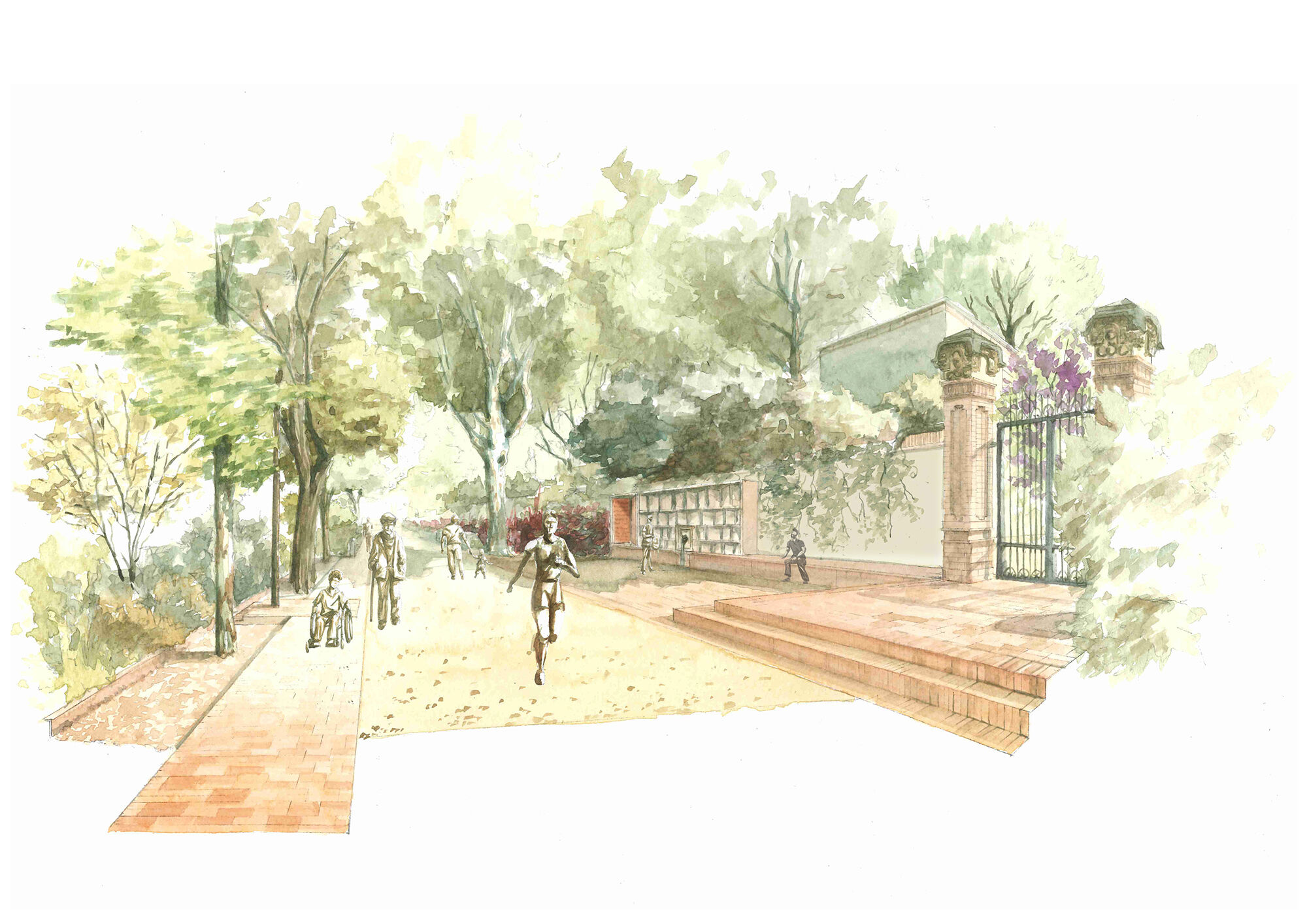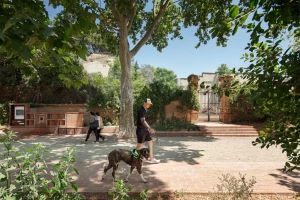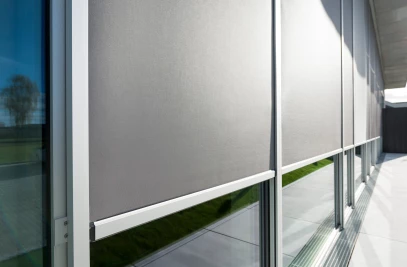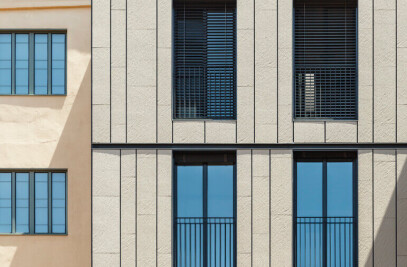Barcelona-based Batlleiroig, a multidisciplinary planning, landscaping, and architecture studio, has completed the recovery and improvement of a historic promenade in the Catalonian city of Reus. The 1.275-kilometer-long (0.8-mile-long) Boca de la Mina promenade was built in the 19th century — located in the north-west of Reus, it followed an existing path that led to the city’s mills (that were a vital part of Reus’s pre-industrial production). The project undertaken by Batlleiroig recovers the promenade’s full functionality, improves its accessibility, solves ongoing drainage issues, and protects its trees.
A place imbued with natural and sentimental value, the project aimed to improve and dignify the Boca de la Mina promenade by favoring those areas that contribute to maintaining its identity.
(Boca de la Mina — “Mouth of the Mine” — is the point at which water emerged from the Monterols mine.)
“This means consolidating the promenade’s character as a recreational space and setting for sports and health practices that respect the environment, promoting its cultural and historical values, and preserving associated agricultural uses,” explains Batlleiroig. The promenade’s urban development provides the nucleus of actions that aim to conserve the environment — “the City Council can then promote different actions that the project considers and interacts with, including cultural routes, water routes, and Reus Smart City,” says the studio.
The use of soft sauló paving helps to maintain the character of the promenade as a recreational area; its plane trees are described by Batlleiroig as “the main protagonists of the space.” It was also important to address and resolve drainage deficiencies and ensure any maintenance is minimal. Transverse slopes in the pavement surface provide a drainage gradient — run-off water is collected in lateral vegetation ditches. The promenade’s side gardens also include new plant species to help increase biodiversity.
To promote inclusivity, a new section of the promenade incorporates a paved strip with a minimum width of 1.2 meters – 3.9 feet (the width varies across the route). The new strip’s materiality integrates with materials that are already part of the fabric and culture of Reus. The use of manual ceramic brick in a range of sizes and formats (from paving to seating) chimes with the use of brick across the area, seen in the walls and fences of modernist farmhouses and the chimney of an old mill — the brick has a clear relationship with the city’s past and Catalan modernism. “The ceramic path plays with different types of brick and rigging to give variety and recognize different points of the project,” says Roger Mermi Ribalta, Architect and Senior Project Director at Batlleiroig.
The promenade connects a sequence of points of interest along its route: “the Font del Lleó (Fountain of the Lion), the Boca de la Mina, the ravines, or the modernist farmhouses are a clear example,” says Batlleiroig. These points are marked using a wall system configured with ceramic adobe lattices — information of interest is then displayed on panels.
A central point on the promenade — previously an open field used for parking — is now a square that improves access to a school. Around this square, the new Parc de les Olors provides a place for further recreation. The park is structured around three aromatic pathways, allowing visitors to enjoy a sensory experience. The square also serves as access to the Jardín Agrario del Campo, a new agricultural plot with a productive and educational function. Its facades and fence are characterized by the use of ceramics, linking the garden with the Boca de la Mina promenade.


























































